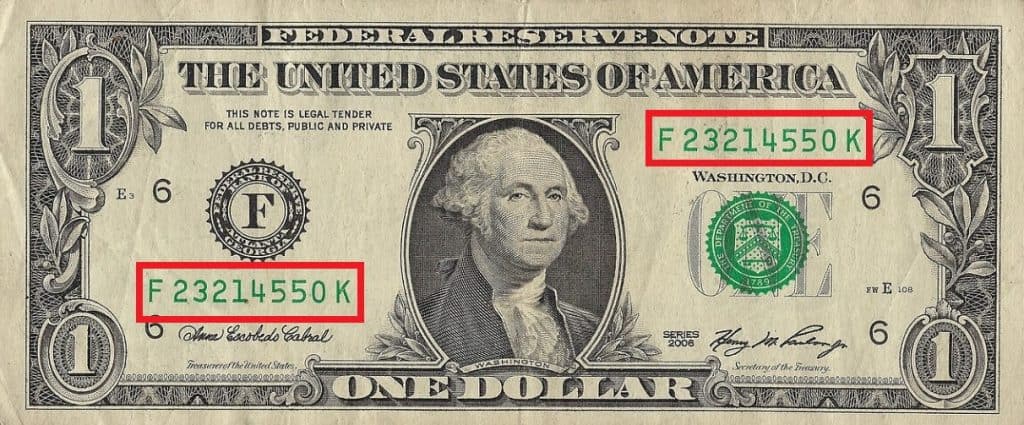
Understanding What Cryptocurrency Is and How It Works
Last updated on June 8th, 2023 at 03:08 pm
Even if you’ve been involved with cryptocurrency for a significant period of time, it can still be difficult to explain to someone, in layman’s terms, exactly what cryptocurrency is. The sheer enormity of the crypto space can easily overwhelm the average person.
So, breaking cryptocurrency down into more digestible pieces is key to understanding this new asset class and the impressive new technology that powers it.
Cryptocurrency is a virtual or digital currency and P2P payment system introduced in 2008 by Satoshi Nakamoto. It utilizes blockchain technology, also known as Distributed Ledger Technology (DLT), to complete processes in an immutable manner utilizing a decentralized network. The term cryptocurrency encompasses coins and tokens.
Gaining a better understanding of how cryptocurrency works, the differences between coins and tokens as well as whether this asset class is possibly worthy of investment, are questions I will endeavor to answer.
What Is Cryptocurrency?
In its most simple form, cryptocurrency is a peer-to-peer (P2P) payment system. This means that anyone using crypto can conduct transactions without the need of a trusted third party, like a bank.
Ultimately, cryptocurrency is similar to fiat money and the banking system, except it exists only in digital form.
That statement may seem a bit confusing, so let me clarify what I mean.
Basically, each particular cryptocurrency is designated by a series of numbers and letters… a serial number if you will.
This string of characters allows for an individual cryptocurrency to be identified and tracked.

This digital string of characters is similar to the serial number on a dollar bill. With this serial number, it is possible to determine where and when a bill was printed for example.
Theoretically, in this dollar bill example, the Federal Reserve should have a record of not only the origin story for any bill printed, but it should also be able to determine where it is currently in their system.
This information is maintained on a centralized ledger that they control.
The Fed then shares this ledger information with local banks and the government.
To continue our example… you go to your local bank to deposit this dollar into your account. But, in order to do so, you first had to open an account.
When you opened your bank account, you provided proof of who you are, otherwise known as Know Your Customer (KYC) information. In turn, the bank then issues you a bank account.
This bank account is nothing more than a series of numbers that designates your particular account in their system (like a blockchain wallet address).
The bank probably also issued you a debit card. This debit card has a series of numbers which also corresponds to your bank account.
This information is collected, processed and transmitted back to The Fed and the government via the centralized FED ledger.
So, when you walk into the bank and deposit that $1 bill into your account, it can be tracked and attributed to you.

Cryptocurrency operates on a similar idea.
Using a block explorer, you can track a particular cryptocurrency, a particular wallet address (think bank account) as well as all the transactions involved with each.
However, one of the main differences between these two systems is that unlike the banking system, anyone can join a blockchain network and transact business. All they need is an internet connection and a cryptocurrency wallet.
Hopefully this analogy has given you a basic understanding of what cryptocurrency is.
While using the banking system as an analogy to explain the idea of cryptocurrency is certainly helpful, the fact is that these two entities are diametrically opposite.
Attributes of Cryptocurrency & Banks
| Attribute | Cryptocurrency | Banks |
|---|---|---|
| 24/7 Availability | Yes | No |
| Autonomous Asset Control | Yes | No |
| Centrally Controlled | No | Yes |
| Finite Money Supply | Yes | No |
| Open/Visible/Auditable | Yes | No |
| Need Permission To Use | No | Yes |
| Secure/Unhackable | Yes* | No |
The mere fact that one is a permissioned, centralized system that is controlled, manipulated and weaponized at will by governments on a daily basis should scare you.
The other is a decentralized, permissionless system that utilized consensus algorithms to provide trustless, P2P transactions and should be embraced.
I discuss these differences between crypto and the banking system in greater detail in my article Which Is Better: Cryptocurrency or Banks?
You should read that ASAP!
Do you want to know what I think about how cryptocurrency compares to the U.S. dollar?
Then head over to my post titled, Benefits of Cryptocurrency vs The Dollar.
How Does Crypto Work?
As I mentioned earlier, cryptocurrency was developed to be a P2P payment system. Since the Bitcoin whitepaper was released in 2008, the uses for cryptocurrency have expanded well beyond just a payment system.
Some Bitcoin maximalists would argue that BTC was designed to be more than just a P2P payment system.
And ultimately, they are correct.
The uses for the Bitcoin blockchain can range from becoming an entirely new internet protocol to a completely decentralized banking system.
These use cases are still being studied and developed… and they are way beyond the information to be discussed here today.
However, this type of work is already underway. You can learn more about these directions by watching the video I have placed in this section.
Blockchain Technology
Cryptocurrency operates on a distributed ledger, otherwise known as a blockchain. In most cases, the transactions conducted on a blockchain are open and visible to anyone at any time.
Transactions are verified and recorded on the blockchain by validators, usually known as miners or stakers. Think of them as the engine that keeps everything running.
These validators use a specified consensus algorithm to complete this work.
They are incentivized to complete this work by earning some of the cryptocurrency created on the blockchain, as well as earning the transaction fees paid by the users.
So as an example, Bitcoin miners receive BTC and Cardano stakers receive ADA.
The two most widely used consensus algorithms currently are Proof-of-Work (PoW) and Proof-of-Stake (PoS).
Learn more about blockchain and the various consensus algorithms.
Crypto Coins and Tokens
At this point you may be asking yourself more questions, like:
Are all cryptocurrencies coins?
Which one is better, a coin or a token?
Both of these are very good questions… and I will answer them next.
Ultimately all cryptocurrencies are not coins. Although the terms coin and token are often used interchangeably, doing so is actually incorrect.
I admit it, I’ve done it… but I’m trying to do better ?
Cryptocurrency Coins
The basic delineation between the two is that coins have their own blockchain. These blockchains are sometimes referred to as the base layer or Layer 1 cryptocurrency.
Blockchains are very expensive and time consuming to build. This is why there are fewer cryptocurrency coins in the ecosystem than tokens.
Looking for a deeper dive into cryptocurrency coins?
No problem, head over to my article Cryptocurrency: What Are Coins?
Top 24 Coins By Marketcap
Cryptocurrency coins can be broken down into two basic groups; coins and privacy coins.
Coins generally have one of two functions. They are meant to be currency like Bitcoin or they are meant to run smart contracts like Ethereum.
These smart contracts allow for cryptocurrency tokens to be run on top of a coins blockchain.
Privacy coins on the other hand are meant to provide users anonymity in their financial transactions.
This is something that is becoming more and more important each day.
As governments look to weaponize fiat money as well as the coming Central Bank Digital Currency (CBDC) that each is developing, privacy coins gain more appeal.
With this growing need for financial privacy, please take the time to read my in-depth article about privacy coins, Cryptocurrency: What Are Privacy Coins?
Top 10 Privacy Coins by Marketcap*
*Excludes Stablecoins and Ethereum Based Tokens
Cryptocurrency Tokens
In a nutshell, tokens are cryptocurrency assets that run on top of another coin’s blockchain. They do not have a blockchain of their own.
So, while a token may run on a specific platform, and can be used in a certain way inside of that platform, the uses for this token are ultimately constrained by the rules and limits of the blockchain it is built on.
Tokens can be broken down into two basic groups; tokens and Stablecoins.
Right now you’re probably thinking that I’ve made a mistake.
How could a ‘Stablecoin’ be a token?
It’s true, there are a lot of terms in the cryptocurrency space that are not what they seem.
Stablecoins is one of those terms.
Top 5 USD Stablecoins by Marketcap
A stablecoin is a token whose price is pegged to another currency or asset. Most of the stablecoins are pegged to USD as the U.S. dollar is currently the world reserve currency.
However, some are price pegged to other assets. Paxos Gold (PAXG) is one of those stablecoins. It is pegged to the price of gold.
It is a cryptocurrency token that is backed by physical gold held in a vault in London. One PAXG is redeemable to the equivalent amount of physical gold.
Stablecoins use different means to maintain their price peg. Some are backed by the actual fiat currency and other stablecoins use algorithmic means of stabilization.
Understanding stablecoins and their use in the cryptocurrency ecosystem is important. You can read my deep dive into stablecoins in my article Cryptocurrency: What Are Stablecoins?
Tokens, outside of stablecoins, can be broken down into three broad categories, security tokens, utility tokens and transactional tokens.
Generally speaking, a token is a representation of something that resides on another blockchain.
Tokens can be representative of just about anything, such as actual monetary value, a tokenized asset (like real estate) or voting rights within a specific ecosystem.
One type of cryptocurrency token you may have already heard of, and even interacted with, is an NFT (Non-fungable Token).
When people talk about NFTs they most often think of an image of an ape or some other jpeg character.
However, NFTs have some amazing potential use cases including the ability to immutable provide proof of ownership of just about any asset as well as providing multiple people ownership of a piece of a singular asset.
Take a deeper dive into the world of NFTs.
There is a lot more to cryptocurrency tokens and their uses. I suggest you read my article Cryptocurrency: What Are Tokens? to get a more complete picture.
Top 10 Tokens by Marketcap*
*Excludes Stablecoins
Securing Your Crypto
Probably the most important truth about cryptocurrency is the phrase:
Not your keys, not your coins
Cryptocurrency was developed to provide users autonomy as well as financial privacy and security with their money.
This autonomy is only possible if we self-custody our assets.
In the crypto world, this means not leaving any of your cryptocurrency on an exchange or giving control of your private keys to anyone else.
If you do not have control of your private keys, you do not have control of your crypto assets.
Your cryptocurrency assets always reside on the blockchain.
In order to prove custody, and ultimately have control over them, you need something called a private key.
This private key allows you to sign for transactions on the blockchain which gives you complete control of your crypto. So ultimately you can send and receive money without anyone’s approval, unlike our current banking system.
You can find more information about public and private keys in this article.
To protect your private keys and interact with your assets you need a cryptocurrency wallet.
There are different types of cryptocurrency wallets, which provide varying levels of convenience and security.
For maximum security of your crypto assets, I suggest using a hardware wallet.
A hardware wallet is a device that holds your private keys in an offline environment. This is often referred to as cold storage.
Because this device stores your keys offline, they are less likely to be hacked and your money stolen.
I recommend choosing Ledger as your hardware wallet. They have different devices, all of which provide maximum security for your private keys.
The need for a cryptocurrency wallet is so important, so much so that I’ve dedicated an entire article to understanding why.
Moreover, understanding the different types of cryptocurrency wallets is a must in order to keep your cryptocurrency investments as secure as possible.
I’ve even made some different wallet suggestions to provide the most secure options for your crypto.
Crypto Price Volatility

Most people, including me, initially get into cryptocurrency to make money.
Cryptocurrency is a speculative asset class and as such, it is subject to extreme price swings.
Generally, the crypto market follows bull and bear cycles like any other market. These cycles in crypto however, seem to revolve, at least partially, around the Bitcoin halving cycle.
The Bitcoin halving is an event which takes place every 210,000 blocks (approx. every 4 years).
During the Bitcoin halving, the amount of Bitcoin that miners receive as a reward is cut in half. This reduction will continue until the year 2140.
At this time, it is expected that mass adoption will have occurred, and the network fees will adequately compensate miners.
However, it should be noted that some cryptocurrency projects can be nothing more than scams looking to part you from your hard earned money.
Remember, crypto tokens are relatively easy and inexpensive to create. So, there is a huge economic incentive for scammers to create a whitepaper, set-up a website and create some advertising to bilk people out of their valuable crypto assets like Bitcoin and Ethereum.
Some of these scams are known as pump & dumps. This is because the scammers do those things we just mentioned and then they start pumping the price.
Retail investors, like you and I, then FOMO (Fear Of Missing Out) in and buy their tokens, then… POOF … the project is gone and our tokens are worthless.

But, normal price volatility provides great opportunities for cryptocurrency traders. However, for investors it can create an emotional rollercoaster, especially when prices drop near 90% during a bear market.
Cryptocurrency Investing
Ultimately, investing in cryptocurrency is meant to be a long term option.
Before investing in cryptocurrency… or anything else for that matter… it’s a good idea to research the potential investment first.
If you are thinking the time has come to invest, but you’re not sure where to start… although this is NOT financial advice, my article Cryptos Considered To Be A Best Investment For Beginners may help.
Moreover, if you are going to start investing in cryptocurrency, consider dollar cost averaging. This should help to give you the best average entry price regardless of the price movement.
If you have never purchased any cryptocurrency, take a moment to read about how buying cryptocurrency works.
Cryptocurrency Wrap-up
Getting involved with and investing in cryptocurrency can be a great opportunity for the financial future of both you and your family.
At the end of the day, you don’t need to know the difference between coins and tokens and all of the inner workings of blockchain to function in the cryptocurrency space.
Take time to research what interests you.
Take time to learn how to get involved safely.
Take time to invest wisely.
Take time to give your investments time.
Disclaimer
The information provided here is for INFORMATIONAL & EDUCATIONAL PURPOSES ONLY!
View our complete disclaimer on our Disclaimer Page






